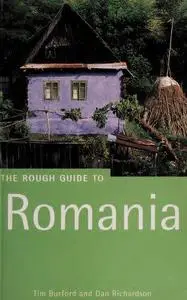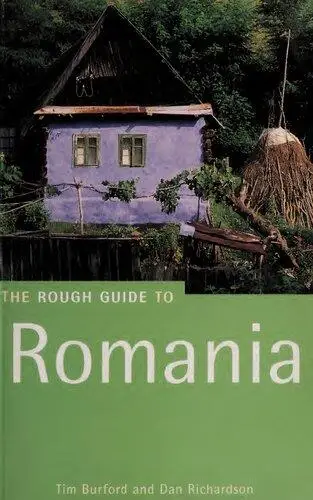The Rough Guide to Romania By Tim Burford, Dan Richardson
2001 | 432 Pages | ISBN: 1858287022 | PDF | 34 MB
2001 | 432 Pages | ISBN: 1858287022 | PDF | 34 MB
INTRODUCTION Travel in Romania is as rewarding as it is challenging. The countrys mountain scenery and great diversity of wildlife, its cultures and people, and a way of life that at times seems out of the last century, leave few who visit unaffected. However, although not as impoverished as Albania and most of the countries of the former Soviet Union, it is still one of the hardest countries of Eastern and Central Europe to travel in. The regime of Nicolae Ceausescu drove the country to the brink of bankruptcy, and Ion Iliescus efforts to provide tangible fruit of 1989s revolution further disrupted the economy; as a consequence Emil Constantinescus government had to embark on a savage austerity programme which has led to big cuts in real earnings. Coming here on a package deal to the Black Sea or Poiana Brasov, or on a "Dracula Tour" will effectively shield you from such realities. Travelling independently will have its frustrating moments, balancing inclinations and plans against practicalities. However, it would be a shame to let such factors deter you from at least a brief independent foray. Much of Romanias charm lies in the remoter, less-visited regions, and its the experience of getting there that really gives you an insight into the country. Rather than expecting an easy ride, try to accept whatever happens as an adventure encounters with Gypsies, wild bears, oafish officials and assorted odd characters are likely to be far more interesting than anything purveyed by the tourist board. Romanians (the countrys largest ethnic group) trace their ancestry back to the Romans, and have a noticeable Latin character. They are generally warm, spontaneous, anarchic, and appreciative of style and lifes pleasures sadly, in contrast to the austerity with which theyre saddled. In addition to ethnic Romanians, one and a half million Magyars pursue a traditional lifestyle long since vanished in Hungary, while dwindling numbers of Transylvanian Germans (Saxons) reside around the fortified towns and churches their ancestors built in the Middle Ages to guard the mountain passes. Along the coast, in the Delta and in the Banat theres a rich mixture of Russians, Ukrainians, Serbs, Slovaks, Bulgars, Gypsies, Turks and Tatars. Bucharest has lost much of its charm its wide nineteenth-century Parisian-style boulevards are choked with traffic, once-grand fin-de-siecle buildings are crumbling and the suburbs are dominated by grim apartment blocks but it remains the centre of the countrys commercial and cultural life. Many of Romanias other cities are blighted by industry and best avoided, but Brasov, Sibiu, Cluj, Oradea and other historic towns still show glimpses of past glories. To the north and west of the country, Transylvania and Banat are the provinces that are most western in feel and allow the easiest travelling, with private hotels, buses and taxis, and information more readily available. Coming from the capital, Brasov is the gateway to Transylvania; just twelve kilometres from the ski resort of Poiana Brasov, its medieval old town is a good introduction to the Saxon architecture of the region, which reaches its peak in the fortified town of Sibiu and the jagged skyline of Sighi7oara. Further north and west, the great Magyar cities of Targu Mures, Cluj and Oradea have retained a wealth of medieval churches and streets, as well as impressive Baroque and Secession edifices. All these cities are served by international trains from Budapest, and any could be your first taste of Romania if youre arriving overland.



